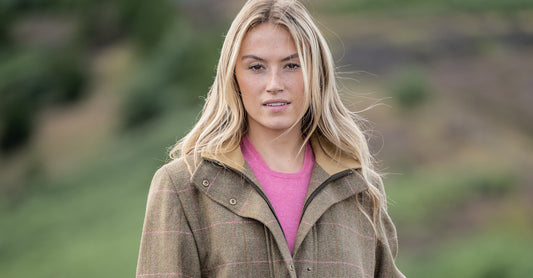Halloween in its modern form is a jumble of customs and traditions handed down over thousands of years from the Pagans and the Celts. A festival that’s resisted the civilising influence of the church, crossed the Irish Sea and the Atlantic and returned to us with embellishments such as the pumpkin and Trick or Treating.
Samhuinn and the Celts
No one is very sure how long Halloween has been celebrated, but it’s certain that the festival of Samhuinn (Scottish Gaelic), Samhain (Irish Gaelic), meaning Summer’s End, played a central role in Celtic culture and pagan beliefs. Samhuinn marked the point in the year when the sun gave way to darkness, an anxious point for an agrarian society that depended on sun and light. The festival also marked the end of the Pagan calendar year and the start of the new year. A transition point that the Celts believed the veil between the world of the dead and living was at its thinnest, in a liminal state that allowed the dead to bleed through into the physical world to revisit the living. Bonfires were lit, for warmth and light, as a symbolic tribute to the sun but also as a reminder to all that the power of the sun lived on through the dark months in form of fire, and that Pagan man had at least partial mastery of fire. Ancestors from the other world were welcomed to join the feasting of harvest fruits, vegetables and nuts, whilst evil spirits were warded off.
All Saints and All Souls Day
As the influence of Christianity spread through the Celtic world, the Church began to assert authority over the pagan traditions and the decision was taken to move All Saints Day from May to the 1
st of November, and All Souls Day, when the Catholic church prays for its dead, on 2
nd November.
Early Halloween
Over time the Christian orthodoxy diluted many of the traditions of Samhuinn but the essential idea of a night on which the dead revisit the living is a powerful one and the festival never quite lost its following. Instead, it was absorbed and tolerated. Samhuinn had always been a time of magical predictions, customs that persisted into the 18
th Century, albeit that the festival was now called Halloween. One of the most evocative of these customs still has the whiff of auld year/new year about it - the tradition of an engaged couple to each throw a nut on the bonfire. If the nuts burned quietly their future together was happy and assured, if they spat violently the omen was bad and their marriage would be sour. Pulling the old stalks of spent brassicas could also net predictions. Stalks of cabbages and kales were pulled blind, after dark by young men and women. The idea is that the height and girth of the stalk predicted the height and frame of your future betrothed. Should you be lucky enough to pull a stalk that held its loam you could expect a wealthy future. Robert Burns makes reference to these traditions in his poem ‘Halloween’:
Amang the bonie winding banks, Where Doon rins, wimplin, clear; Where Bruce ance rul'd the martial ranks, An' shook his Carrick spear; Some merry, friendly, countra-folks Together did convene, To burn their nits (nuts),
an' pou their stocks (stalks),
An' haud their Halloween
Guising and Disguising
Of the remaining traditions, the most famous has to be Guising. The meaning of which suddenly becomes clear when you know that the origins of guising lie in dressing up children (and adults) to disguise them from the returning dead who might seek to exact revenge on anyone who had wronged them in their life. Disguised children could wander among the spirits of the dead visiting the feasting houses on Halloween, where they would receive an offering of nuts or fruit to ward off evil. Now, Halloween guising is still a common practice, although fruit and nuts would be less popular amongst the youth of today. Guising in Scotland consists of kids dressing up and singing to willing doors in exchange for sweets and money.
Trick or Treating - Across the Atlantic and Back
When the Irish migrated in large numbers to America during the famine, they took with them the traditions of Samhain and Halloween. There they adapted to the local environment, carving pumpkins instead of the turnip ‘Jack o’ Lantern,’ and Trick or Treating instead of guising. And so emphatically has American culture embraced Halloween, and so emphatically do they dominate popular culture that now they’re feeding it back to us.
How to host a Scottish Halloween
To get into the spirit, so to speak, of a true Scottish Halloween; here are a few ideas.
Dookin' for Apples
Dooking for Apples originated with the ancient Celts who believed Heaven would be filled with apple trees packed full of fruit and flowers. The point of the game is to submerge your face into the water and catch an apple with your teeth as fast as you can. To prepare a Dooking for Apples game, fill a big bucket or basin of water, fill with a dozen apples and enjoy as the participants take it in turn to try and bite into an apple as it bobs and escapes the growingly frustrated contestant. Set up two basins with opposing teams, the team to catch all the apples first wins!
Treacle Scones on A String
This Scottish Halloween party game involved hanging scones coated in sticky treacle from a line above everyone's head, similarly to Dooking for Apples, participants would get messy and frustrated as they tried to grab hold of the scone using only their teeth. In more recent times, treacle scones have been replaced with sugary doughnuts.
Carving Pumpkins
The age old practice of carving pumpkins is a fun, crafty way to get in a spooky mood. Even better, make a day out of attending a pumpkin patch to choose the perfect pumpkin for your creation. Carefully with a knife, a 'lid' should be cut and the insides scooped out until the vegetable is a hollow structure with about 1.25 inch thick walls for easy carving. Using a small kitchen knife, carefully cut out shapes into the pumpkin face to form a spooky design. Finish with a tealight inside for the perfect ambience setting Halloween decoration. Pumpkin carving is a fun way to spend an evening with the whole family and a great way to add some seasonal flair around your home especially as the wintery evenings set in.



